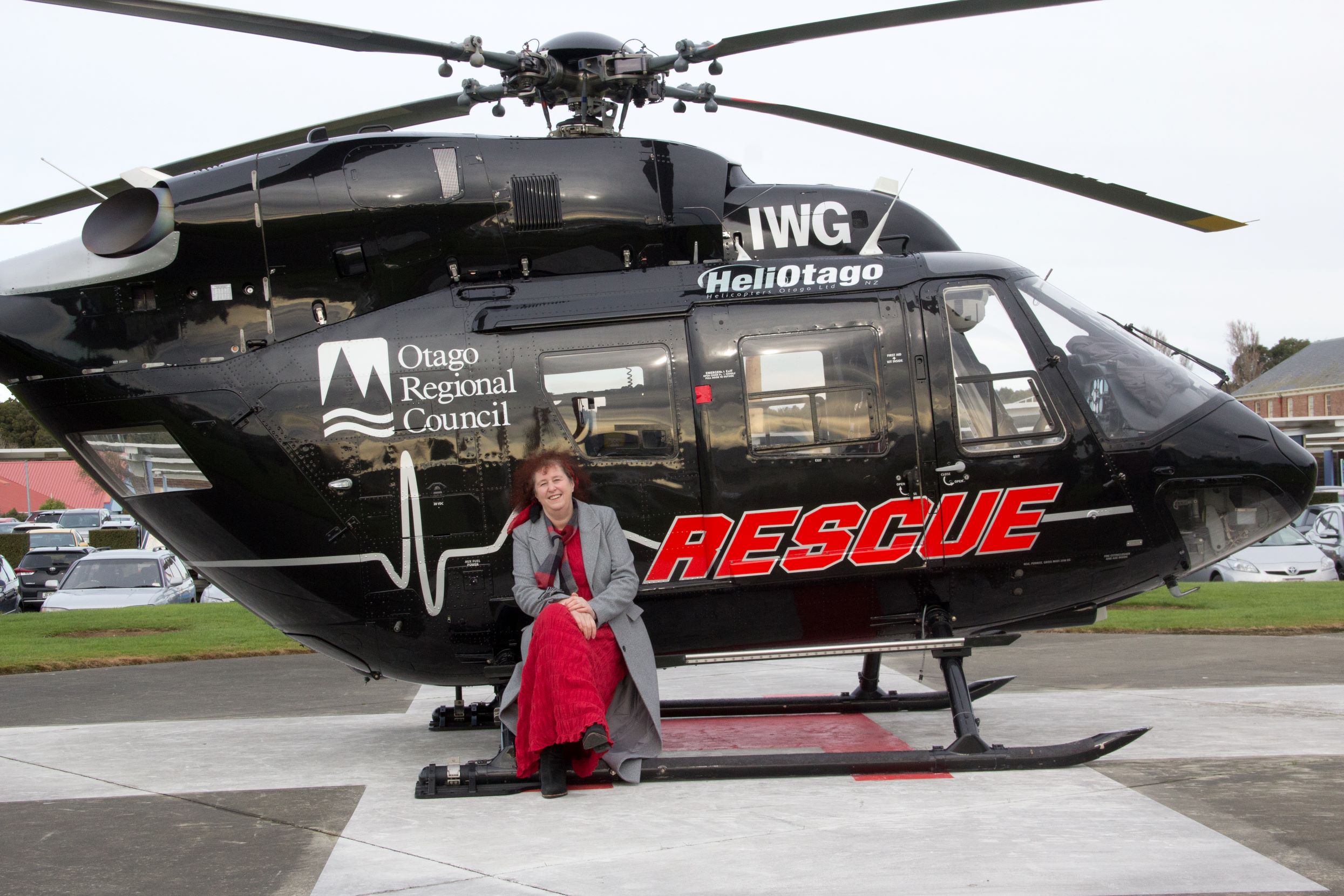It’s Graeme Gale who gets the phone call at night when someone is in need of the Otago Southland Rescue Helicopter Service.
Considering almost every call involves someone in critical condition, moments do matter. Hence the need for a helicopter.
There was a time when the weather gods often played a key role in whether Gale could get a team to that patient fighting for their life.
The Managing Director and CEO of Helicopters Otago Limited was always uncomfortable with that.
They legally couldn’t fly in cloud and in freezing temperate.
Gale spent much of the past decade working towards the situation where they can fly more frequently.
He rarely has to turn down calls now.
Gale’s gone about the massive undertaking of designing, producing, and validating routes where they can use Instrumental Flight Rules [IFR].
In short, the Otago Southland Rescue helicopter Service can now fly in most conditions, lower in the sky, because of those flight routes using instrumental factors, rather than just visual.
“I personally field every one of those calls at night and I can tell you it never makes you feel good if you’ve got to turn a job down.
“It might be a young child fighting for their life and I’ve got to turn that down because I can’t get the team there. We’ve taken that away, now we can go and do that job,” Gale says.
“It’s a very complex setup, you’ve got to have high-level aircraft and the pilots also have to be IFR qualified as well.”
“It has absolutely transformed the care that we’ve been able to give to the wider Southland region.
“It is a really super big deal. Because if the freezing levels were down to a certain level the patient would be taken by road. That may not have been in the best interests of the patient.
“Now we can come down at a low level with a medical team on board.”
Introducing those flight routes has come at a cost. About $1m in fact.
Gale paid tribute to the communities throughout the region who have rallied to ensure the required funds were available to have such a world-class service operating.
The ILT is one example of the community support the trust receives. The ILT agreed to a $175,500 grant to be put towards an additional ventilator, as well as operating costs.
ILT board member Suzanne Prentice has also joined the helicopter rescue trust as a board member.
Her connection to the service is personal given she was airlifted to Dunedin Hospital for emergency care.
Gale used a fortnight ago as an example of the importance of the world-class service it now offers. Most of its flights across four days were operated using IRF.
If they were operating solely with Visual Flight Rules, they would legally have had to turn down every one of the flights.
It’s the difference between people living or dying, or at the very least the early intervention plays an important role in people’s recovery.
The Otago Southland Rescue Helicopter Trust has the not-so-small task of finding $1.2m-plus from the community each year to top the Government funding it receives.
In 2022 the service flew 1909 missions, most of them lifesaving. It is a fair workload and makes that $1.2m-plus fundraising effort each year every bit worth it.
But those at the Otago Southland Rescue Helicopter Trust point out that even if they flew just one mission, and it helped save one life, the investment would be worth it.
“They are literally saving lives every day,” Otago Southland Rescue Helicopter Trust secretary manager Vivienne Seaton says of the work the crew carries out.
“It’s a large amount [to fundraise] for our small community and we are incredibly grateful to the community organisations across the region and to individuals.”
It’s said that the best sound in often desperate situations is the sound of one of the Otago Southland Rescue Helicopter Service helicopters arriving with its team of highly skilled pilots and intensive care paramedics, carrying specialised life-saving equipment.
It was previously labelled the Otago Rescue Helicopter Service, but Southland was added to the name to better reflect the work it does in Southland.
Of the 1909 missions undertaken last year about 30 percent were carried out in Southland.
“There are really stunning outcomes. And I think it’s good for Southlanders to gain an understanding that this is their service,” Seaton says.
“I receive notes of thanks from patients every day, literally every day.”
“Of course, the rural community is very reliant on it because often they are in isolated areas or hard-to-access areas if there is a farm accident.”
The $1.2m figure previously stated is the expected fundraising needed to cover the day-to-day operations of the service.
On top of that the community also helps to fund new innovations, which includes the IFR routes explained by Gale.
State-of-the art-equipment is viewed as important in helping continue to save lives.
Gale doesn’t take the community support the service receives for granted. In fact, he says he’s humbled by the way such small communities unite to raise such large amounts of money for the important service.
He says it stretches beyond funding the service. Many Southland communities have stepped up to also help fund putting helicopter pads in their town to help further.
“I’ll use the Stewart Island community for example. They fundraised, maybe $80-odd-thousand to put a helipad in there, with lights and a windsock. Lumsden just poured the concrete last well for a helipad there.
“Gore organised a helipad for us at the school right next to the hospital.
“Tapanui put a fantastic pad there, that’s all lit, and all-weather pad at their medical centre.
“All these local communities, I cannot speak highly enough of them.”
